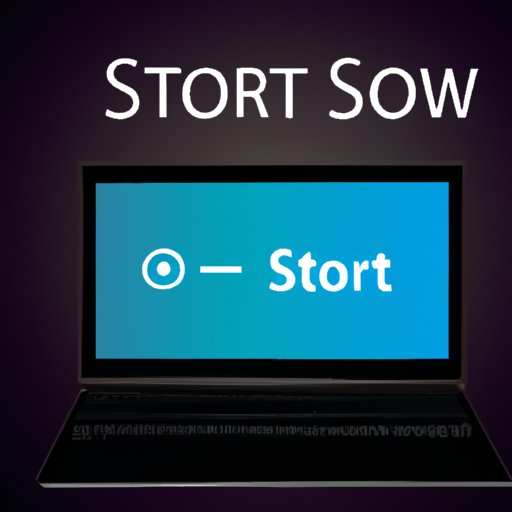Introduction
Restarting a laptop is an essential part of any computer user’s life. It can help resolve problems that are caused by software or hardware issues, or it can just provide a fresh start for your laptop. But what exactly does it mean to restart a laptop? And how do you go about doing it? In this guide, we’ll answer all of these questions and more so you can learn how to restart your laptop like a pro.

Definition of Restarting a Laptop
Restarting a laptop is simply the process of shutting down and then starting up the laptop again. This can be done manually by the user, or it can be done automatically by the laptop itself. When you restart your laptop, you are essentially giving it a “fresh start” – wiping away any temporary files, programs, or settings that may have been causing issues.

Overview of Problems That Can Be Resolved by Restarting a Laptop
Restarting a laptop can help resolve a wide range of issues, including:
- Slow performance or freezing
- Software not working properly
- Connectivity issues (such as Wi-Fi not connecting)
- Hardware not working properly
- Error messages or pop-ups
Restarting a Laptop Using the Start Menu
The simplest way to restart a laptop is by using the Start menu. This method works on most Windows laptops, although the exact steps may vary slightly depending on your laptop’s model and operating system version. Here’s how to do it:
- Click the Start button in the bottom left corner of your laptop’s screen.
- Select the Power button at the bottom of the Start menu.
- Choose the Restart option from the list of options.
- Wait for your laptop to shut down and restart.

Performing a Full System Shutdown and Reboot
If you’re having trouble with your laptop, it may be beneficial to perform a full system shutdown and reboot. This will ensure that all of your laptop’s components are completely shut down and restarted, which can help resolve any underlying issues. Here’s how to do it:
- Press and hold the Power button on your laptop until it shuts down.
- Wait a few seconds before pressing the Power button again to turn it back on.
- Wait for your laptop to boot up and restart.
Rebooting a Laptop Through the Command Prompt
Another way to restart a laptop is to use the Command Prompt. The Command Prompt is a powerful tool that allows you to control your laptop’s settings and programs using text-based commands. To use the Command Prompt to restart your laptop, follow these steps:
- Press the Windows key + R to open the Run dialog box.
- Type “cmd” into the search box and press Enter.
- Type the command “shutdown /r” into the Command Prompt and press Enter.
- Wait for your laptop to shut down and restart.

Use a Keyboard Shortcut to Restart Your Laptop
If you’re in a hurry and don’t want to bother with the Start menu or the Command Prompt, you can use a keyboard shortcut to quickly restart your laptop. This works on most Windows laptops, although the exact combination of keys may vary depending on your laptop’s model and operating system version. Here’s how to do it:
- Press and hold the Ctrl + Alt + Delete keys at the same time.
- Select the Restart option from the list of options.
- Wait for your laptop to shut down and restart.
Restarting a Laptop With an External Power Button
Some laptops come with an external power button that can be used to restart the laptop without having to use the Start menu or the Command Prompt. This is especially useful if your laptop’s battery is dead or if the power button isn’t working properly. Here’s how to do it:
- Locate the external power button on your laptop.
- Press and hold the external power button until the laptop shuts down.
- Wait a few seconds before pressing the external power button again to turn it back on.
- Wait for your laptop to boot up and restart.
Conclusion
Restarting a laptop is a simple but often overlooked task that can help resolve a wide range of issues. Whether you’re using the Start menu, performing a full system shutdown and reboot, rebooting through the Command Prompt, using a keyboard shortcut, or restarting with an external power button, the process is fairly straightforward and should take just a few minutes.


